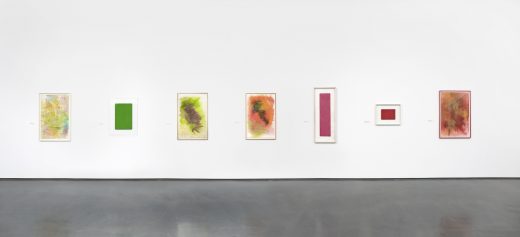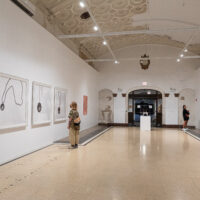David Hammons

The economy of artist David Hammons’s conceptual practice conjures the act of recycling. Working with the scraps and spoilage of everyday life, Hammons makes art in which waste is taken up, reduced, reused, and used again until every ounce of meaning has been extracted. There is no excess in Hammons’s work. To the contrary, his materials—grease, dung, hair, bones, and empty bottles—already account for the excesses of human activity. The resulting visual permutations are marked by their bareness, their thrift, and their simplicity. Indisposed to adopt any singular style, his performances, sculptures, installations, and ephemeral outdoor interventions never feel forced or heavy-handed, but instead naturally follow the line and logic of his ideas.
Hammons, born in Springfield, Illinois, moved to Los Angeles in 1963 at age 20 to study art. While he would later move to New York City in 1974, finding roots in Harlem, the outsider attitude of the Los Angeles art scene would inform his outlook long into his career. Growing up against the backdrop of the civil rights movement and finding his artistic stride under and alongside key proponents of the Black Power movement, Hammons, of African-American descent, began to make artwork in a highly politicized context that was marked by the race riots and demonstrations of the ’60s. While some of his work has been labeled as protest art, this characterization fails to capture the heterogeneity of his offensive strategies which are self-effacing at every turn. If his works have direct parallels in protest, it is most apparent in his decision to work in the streets: uniquely charged sites in the thick of a culture of marches and sit-ins.
His artwork is often discussed in terms of coding and signification—a train of cultural symbols unfolds in the decoding of discrete objects in his assemblages: a shovel is a spade is a racial slur. The titles of his works, replete with wordplay and idiomatic expressions, are as fine-tuned and efficient as the compositions themselves. However, his work does not cave to easy readings, and Hammons himself is loath to be reduced to the next hot classification. Borrowing cultural symbols from bum wine and basketball to the canon of abstract painting, Hammons crafts a messy portrait of American life. As a well-versed rule breaker and progenitor of poetic justice, he continues to artfully and elegantly rework his ideas in the public sphere, intent on finding the moments where a slip of the tongue might really be a slip of brilliance.
